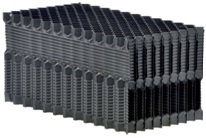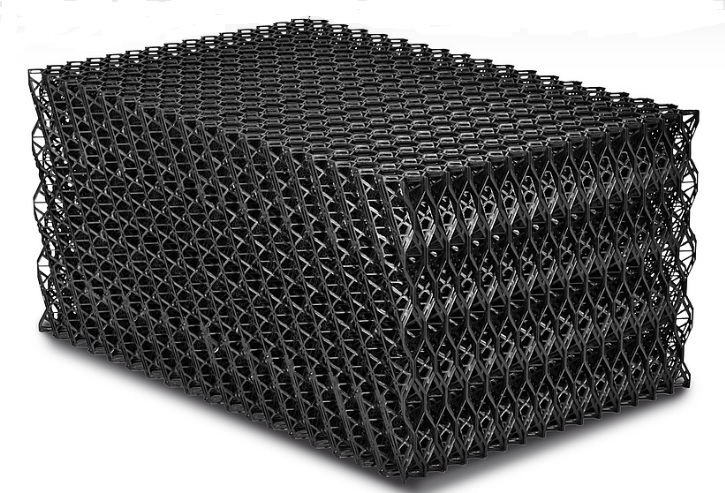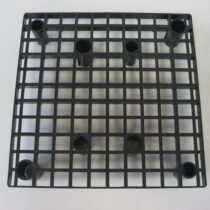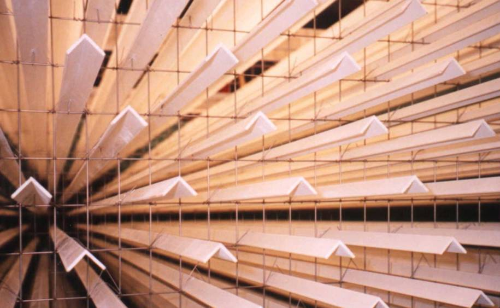Fill: a cooling towers key element
The filling is the operational heart of a cooling tower. The air-water countercurrent contact occurs through it causing water cooling by evaporation of a small part of it.
That is why we must pay special attention to the selection in order to get a useful life as long as possible under the best efficiency conditions. A very efficient filling in terms of its thermodynamics is not better when it is working with waters loaded with solids, since its efficiency would decrease exponentially over time, with concentration of solids capable of filling it up.
Choosing the right filler
The first step choosing the fill for a cooling tower is to know the facility water quality where it will operate and both climatic and environment morphological conditions where it will be located. A cooling tower that receives industrially clean water but is situated next to another factory with a dusty environment or gets frequent gusts of air from a cement or steel plant for instance, will be considered as a solids loaded water since the cooling tower will act as a vacuum for the environmental dirt.
In oil industry, we find different applications for cooling towers that have different characteristics in the cooling circuit water:
- Olive dressing or packaging industry. Clean water from pasteurizers or autoclaves, possibility of traces of oil from broken cans.
- Alpeorujo or waste treatment industry. High content of solids water due to the dusty facility environment, and possibility of acidic pHs.
- Pomace / sunflower oil refining. Waters loaded with oils and fatty acids
Fill pack types in oil industry
- Laminar. The water to be cooled is distributed over the filling surface.
They are used for industrially clean water, never with fats or oils.


- Mixed. These fills have both splatter and film principles.
For water with suspended solids up to 300 ppm approx and 5 ppm of oil or fat.
- Splash. Designed to break up the smallest drops.
For waters with a high content of solids or presence of oils and fats


The most used fill pack in dressing or packaging industry are laminar or mixed as they are the most thermally efficient. They are manufactured in PVC or PP depending on the temperature they will withstand. Its performance will decrease over time due to the particles accumulation inside or to the water hardness itself that will end up collapsing the fill over the years.
Splash fillers are mainly used in refineries or extractors since, although they are less efficient, support a high solids concentration in water or air that passes through them. They require less maintenance and keeping the performance over the time.
Maximum recommended limits for each fill pack:
CONCEPT | LIMIT | DANGER |
Total Suspended solids (TSS) | <40ppm (Laminar K12) <70ppm (Laminar K19) <300ppm (Mixto Trickle) No limit (Splash GS) No limit (Splash Goteo) | Fill obstruction |
Oil and grease | 0ppm (in laminars) <5ppm (in antifoulings) <10ppm (in splash) | Fill obstruction |